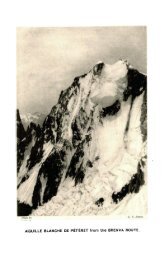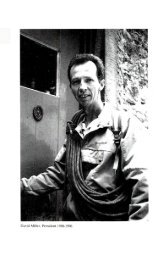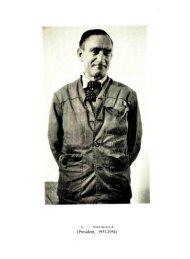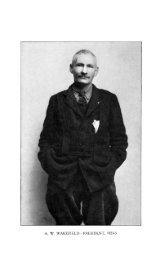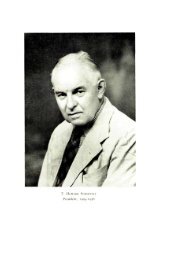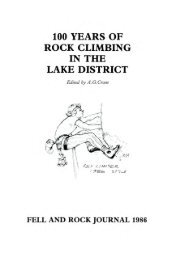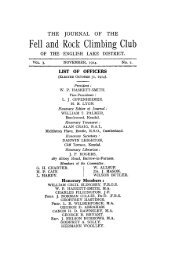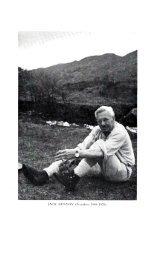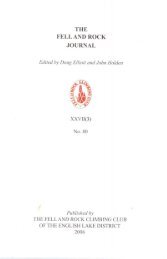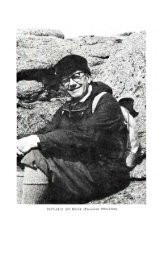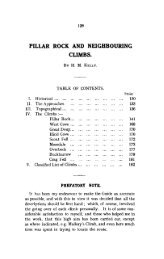Year of publication 1960 - Fell and Rock Climbing Club
Year of publication 1960 - Fell and Rock Climbing Club
Year of publication 1960 - Fell and Rock Climbing Club
Create successful ePaper yourself
Turn your PDF publications into a flip-book with our unique Google optimized e-Paper software.
26 THE MOUNTAINS OF MOURNEthe Spelga Pass lie Pigeon <strong>Rock</strong> <strong>and</strong> Eagle Mountains, whichshould be included in this group; then the High Mournes losethemselves in the Low Mournes which run on down toRostrevor.The rock is granite or, more accurately, the rocks aregranites, a number <strong>of</strong> variations being present in the climbingarea: from the point <strong>of</strong> view <strong>of</strong> the climber they are allcoarsely crystalline with a tendency to monolithic blocks <strong>and</strong>slabs giving holds which are either the juggiest <strong>of</strong> jug-h<strong>and</strong>les,or an exercise in imagination. The tiny incut holds pr<strong>of</strong>uselyprovided in the Lakes are almost unknown in Mourne. Thejunctions <strong>of</strong> the blocks <strong>and</strong> slabs tend to weather into shallowgrooves with rounded edges which, together with the factthat most <strong>of</strong> the buttresses are summit tors or outcrops between60 <strong>and</strong> 200 feet high, gives a remarkable resemblance,seen from a distance, to gritstone. This resemblance iscompletely spurious <strong>and</strong> has resulted in stretched nylonbefore now. The rounded cracks mentioned above are <strong>of</strong>teninsufficiently incut to provide any conventional hold, notdeep enough to allow jamming <strong>of</strong> appendages or the otherlow stratagems <strong>of</strong> the V.S. man, <strong>and</strong> without enough thincrack at the bottom to accept a piton with any conviction <strong>of</strong>security. Finally, the hard glassy granite is very unsympatheticto the frictional approach <strong>of</strong> the gritstone artist.Accordingly, many <strong>of</strong> the steeper faces have yielded onlyalong very positive lines <strong>of</strong> weakness, <strong>and</strong> the classical routes<strong>of</strong>ten break through steep portions by traverses or slab moves<strong>of</strong> great elegance <strong>and</strong> delicacy. Usually, the steeper the face,the greater the tendency to absence <strong>of</strong> holds; while the shallowslabs have weathered to great jug-h<strong>and</strong>led plaques <strong>and</strong> flakes<strong>and</strong> the junctions <strong>of</strong> their blocks have been worn by waterinto deep cracks, the steeper slabs remain monolithic <strong>and</strong>shallowly grooved. The slabs <strong>of</strong> Slieve Lamagan <strong>and</strong> SlieveBearnagh <strong>of</strong>fer hundreds <strong>of</strong> feet <strong>of</strong> both sorts <strong>and</strong> have slabroutes <strong>of</strong> most entertaining variety.Most types <strong>of</strong> rock have a key which, when found, opens theway to hard routes. In Mourne it is the presence in thegranite <strong>of</strong> small cavities lined with quartz crystals. Thesecavities, mainly an inch or two in size, have a tendency to liein definite lines. They <strong>of</strong>ten weather to provide smallfingerholds, but, more important, the rock weathers along



